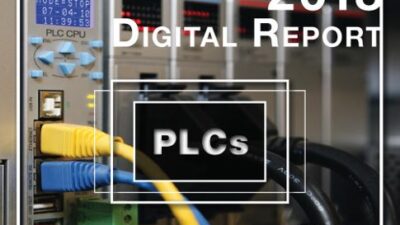| December 9, 2005 |
| Highlights | Sponsored by Control Engineering |
| Cononco Phillips’ Montana oil pipeline origination/injection station reduces capital costs by 33% and saves energy with a new variable frequency drive and a synchronous transfer system. |
| Conoco Phillips Petroleum Saves Money and Energy with New Motors and Drive When Conoco (which merged with Phillips Petroleum in 2002) planned the expansion of its operations with the construction of a new crude oil pipeline origination/injection station in Buffalo, Montana—along an existing third-party pipeline extending from Alberta, Canada, to Montana—the costly mechanics of pumping oil were front and center.
Flexibility was key in choosing the station’s operating mode. Because the crude oil either originates out of tankage into the existing pipeline or is blended into the crude oil flowing upstream, the station pumps a wide range of crude oil types at various flow rates, viscosity, and density. As a result there were five different pumping scenarios to be considered. It was important to Conoco to reduce the number of pumps and motors necessary and not have excessive throttling. All these items would affect initial capital costs, energy efficiency, and the corresponding long-term costs. Time constraints were also a big challenge, as the station had to be complete and fully running within 12 months. Pump operation One large pump was considered for use to reduce initial costs, but it would be inefficient in low flow rate cases, and overall optimization and reliability would be affected. Working with Rockwell Automation, the approach Conoco Phillips chose was to use two centrifugal pumps of different sizes to accommodate the differing flows, and a variable frequency drive (VFD) with synchronous bypass to control the motors. This combination allowed for the best efficiency during normal operation between the five pumping scenarios and limited flow rate backup operation if one motor failed. “The drive is a huge energy saver,” said Conoco’s Technical Excellence Leader, Rodney Kottwitz, “because we’re not throttling off the pressure.” A control valve option would have required three or four different motor configurations to meet the different scenarios without excessive throttling, resulting in energy loss of the throttled pressure and a large increase in capital. Motors and drive Typically, a separate drive is used to start and control each motor, but drives are a large capital expenditure. Because of the cost issues, the company chose to go with one 2500 hp Allen-Bradley PowerFlex 7000 AC variable frequency drive with 18-pulse rectifier and a synchronous bypass system. The 18-pulse drive eliminated the need for harmonic mitigation in meeting IEEE-519 standards, and the synchronous bypass option allowed operation of either motor on a single VFD to control flow rate and pressure of the pipeline. With a VFD, torque levels applied to the rotating equipment during starting are reduced. The VFD controls the speed of the motor/pump so that it always corresponds to the flow rate actually required and therefore only draws the power required. Also, a VFD reduces equipment vibration during starting and stopping while pressure surges are reduced or eliminated. Overall, using a VFD to start and control the pumps results in less stress, less maintenance, and longer life of the motor and drive equipment. The PowerFlex 7000 offers the additional benefit of being smaller than its predecessors, thus saving valuable floorspace in the station. The synchronous bypass system also proved advantageous compared to using a separate drive for each motor. The synchronous bypass method uses only one drive to start and synchronize both motors through the process of transferring a load from one source to another by matching the voltage waveform frequency, amplitude, and phase relation between the two sources. The synchronous bypass is more energy efficient than multiple drives and has the additional benefits of preventing voltage drop, vibration problems, or process disturbances. Also incorporated into the motor and drive application is a Rockwell SCADA system—PanelView 1000 MMI—to control the flow rate and a programmable logic controller with PID control blocks to control the drive speed. The PanelView SCADA communicates with Conoco’s main SCADA control center in Houston. Up and running The economic advantages of the VFD with a synchronous bypass can be found in installation and operating costs. A synchronous system for two motors costs 33% less in initial capital outlay compared to multiple drives. A synchronous transfer system will also avoid drive efficiency losses when compared to multiple drive systems. A nine-month to two-year payback period is typical when medium voltage VFDs are applied to control the output of a pumping system instead of throttling with control valves.
|


